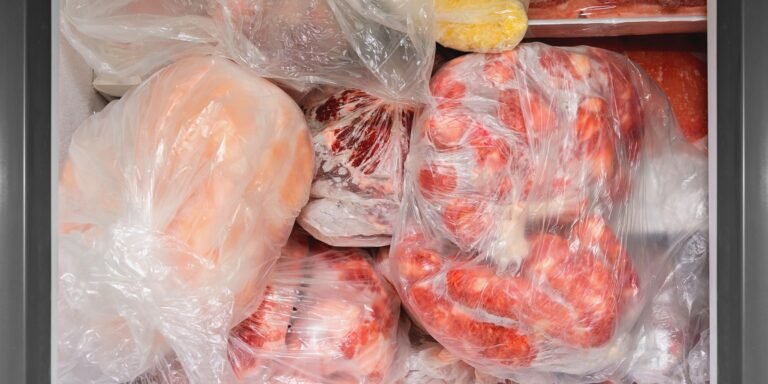How To Keep rice Fresh During Long Term Storage
This post may contain affiliate links, full disclosure here.
It’s always a good idea to be prepared for anything life throws at you, from natural calamities to financial difficulties.
Food is one of the most basic human requirements, so storing up on items that can be preserved for extended periods of time could save your life, or at the very least come in useful on a wet day.
Rice is an excellent food item for long-term preservation, and you will never regret putting food aside and building up your food supply.
Why Store Rice?
Although you can and should store a variety of foods, rice is a great place to start. It’s cheap, can be bought in huge amounts, and can be stored for a long time.
Rice is an excellent base for meals, but it also contains nutrients and calories when consumed on its own. Rice does not require a lot of salt or other preservatives to keep it fresh, making it a healthier alternative than many canned or dried goods.
Rice is also very simple to prepare because it only requires water and heat to cook. When cooked, it fluffs up to twice its original size, making it useful for both storage and survival meals, and it’s satisfying without being heavy.
Rice is an easy-to-cook, healthy, and energy-giving grain that is commonly used as a side dish in Asian cuisine. It’s a far better option than canned products or junk meals.
- Twice its volume when cooked
- Easy to cook
- Free of cholesterol, sodium, and fat
- Hunger-satiating
- Inexpensive
- Free of allergens
See also: Shelf Life Of Wheat Berries
Can Dry Rice go bad?
Insects and rodents are a risk with any food storage, but because rice is a field grain, pests are the most serious long-term storage issue. To keep rice from rotting, it needs to be ventilated (unlike most foods, which should be stored in airtight containers).
Allowing for ventilation can enable bugs and vermin in if done incorrectly. Rice sweats when it becomes heated, and pests are attracted to warm, moist environments to develop nests and lay eggs. While pests are a worry, proper storage procedures can help reduce the chance of infestation.
When keeping rice for a long period of time, you must also consider mould and how to avoid mould growth from causing damage to your rice storage. Mould can convert dry rice into a green-coloured mess in no time. The mould needs organic material as a food source, as well as warmth, moisture, and oxygen to grow and thrive. As a result, by removing these necessary elements that foster mould, you can keep your rice from rotting.
You obviously can’t ignore the fact that rice is the organic substance that mould will consume as a food source. When you buy rice, it is dry and contains very little moisture.
However, if the humidity and room temperature remain high for an extended period of time, the rice will begin to absorb moisture and will most certainly mildew.
Controlling the temperature and humidity levels in the storage room is the best way to avoid mould.
Pests and Bug Concerns When Storing Rice
Rice is a type of grain that is grown in the field. Pests are one item to be concerned about when preserving rice for an extended period of time. Rice should be allowed to breathe whether it is being stored for a short period of time or for a lengthy period of time. Rice, unlike other foods, requires some degree of ventilation to prevent deterioration. Tightly sealed containers, on the other hand, make it even easier for bugs to present themselves or their eggs to hatch and multiply. The heated weather is primarily to blame for this. When rice is heated, it “sweats,” and unwelcome bugs flourish in damp environments.
| Oxygen Free Shelf Life | In Store Package Shelf Life | Freezer Shelf Life | |
| Long-grain | 30+ years | 5 years | 30+Years |
| Jasmine | 30+ years | 5 Years | 30+ Years |
| Basmati | 30+ years | 5 Years | 30+ Years |
| Arborio | 30+ years | 5 Years | 30+ Years |
| Minute Rice | 30+years | 5 years | 30+ years |
| Other Types of Rice | – | – | – |
| Brown | 18 months | 3-6 months | 12-18 months |
| Black/Purple | 18 months | 3-6 months | 12-18 months |
| Wild | 30+ years | 10+ years | 30+ years |
What Type of Rice Should I Store?
Although any form of rice can be stored, not all types of rice have the same storability and shelf life.
Instant rice does not have the same shelf life as normal rice. The expiration date on most instant rice packages is usually shorter than two years.
When compared to white rice, brown rice is known for its nutritional benefits, while white rice takes longer to spoil. White rice can endure up to 30 years if properly preserved.
How to Store Rice for Best Long-Term Results
Containers
You don’t want your rice to absorb any odours, liquids, or residue, so make sure your container is clean and dry. It is critical to store any food item in the right containers, and different types of foods necessitate different storage containers.
Using a food-grade plastic container is your best bet (if you are worried about the chemicals in plastic seeping into your food, there are plenty of options that are certified BPA-free).
It’s also a good idea to choose a container made expressly for rice storage, because unlike most food storage, the lid’s seal shouldn’t be completely airtight. Rice need oxygen to survive, therefore if you can’t find the suitable container, buy a bunch of the following item.
Food-grade buckets may be used to keep rice for a long time and can even be stacked to reduce storage space. The plastic buckets keep everything out while keeping the contents of the container dry. The contents of the plastic buckets would remain intact even if they were submerged in a few inches of water.
Oxygen Absorbers
You know those tiny packets in some food packaging, or even purses and other leather goods, that look like sugar packets but are smaller? These are oxygen absorbers, which contain minerals such as iron or Vitamin C that absorb oxygen fast.
It’s crucial to keep in mind that not all oxygen absorbers are created equal. Some are made for dry items, while others are made for wet things. Make sure you get oxygen absorbers meant for rice or dry foods when you buy them.
Mylar Bags
Mylar bags are well recognised for their capacity to block oxygen, which helps to prevent oxidation in whatever is stored within. So, if you carefully store a bag of rice inside a mylar bag with the addition of oxygen absorber packets, you can easily store the rice for 10 to 20 years.
When it comes to storing rice this way, it all comes down to the packing, which is what will assure the longevity of your rice. Brown rice should not be stored in mylar bags because the oils in the rice may leak out and begin to turn rancid over time.
If you’re going to use mylar bags for food storage, choose the thickest ones you can find. When the bags are too thin, holes and punctures are all too common. Look for mylar bags with flat bottoms so the contents don’t spill all over the place if they tumble over.
Storing Rice in the Freezer
If you only have a small bit of rice and want to keep it for a long time, you can put it in the freezer. However, if you expect the power to go out during a disaster or if your freezer stops working, this strategy will not work. If you opt to store your food in the freezer, keep these points in mind.
If you only have a small amount of rice, though, freezing it in a sealed container will keep dust and impurities out, as well as flies and other pests. You can alternatively put the rice in a resealable heavy-duty freezer bag in its original package.
Keep It Cool
Rice should be stored at or just below 40 degrees Fahrenheit. Rice can last the longest at this temperature, for a maximum of 25-30 years.
Rice can be stored around 70°F, however, this necessitates the use of enough oxygen absorber packets to prevent the rice from sweating, which causes the rice to spoil or creates an inviting environment for bugs.
Rice stored at a 70° temperature will not live as long as rice stored at a 40° temperature; rice stored at a 70° temperature will only last 10 years.
Can You Store Cooked Rice Long Term?
If you produced rice and have a large amount leftover, you must use it within a few hours. If cooked rice is not stored properly, it can make you sick. To begin, quickly chill the cooked rice. Cooked rice has high moisture content and can quickly become a breeding ground for bacteria if left at room temperature for more than two hours.
After that, put the cooked rice in a food-safe container and refrigerate it. Cooked rice can be kept fresh in the refrigerator for 4 to 6 days if stored properly. You can also use heavy-duty freezer bags to store the rice. In this manner, you’ll find that the greatest quality can endure up to six months.
If the cooked rice has a terrible odour or a strange appearance, toss it straight once.
You now have a rudimentary understanding of everything you’ll need to keep rice for decades.
References
- Briefing – Rice: Background. (2008). Retrieved June 20, 2008 from www.ers.usda.gov
- Connor, W. E., & Conner, S. L. (n.d.). Rice- based diets: Nutritional properties. Retrieved July 8, 2008 from www.faqs.org
- Coons, L., Halling, M., Lloyd, M. A., Ogden, L. V., & Pike, O. A. (2004, July). Quality of regular and parboiled rice in long-term storage. Poster presented at the Institute of Food Technologists Annual Meeting, [LOCATION].
- Coons, L., Halling, M., Lloyd, M. A., Ogden, L. V., & Pike, O.A. (2004). Quality of regular and parboiled rice in long-term storage. IFT Book of Abstracts, No. 99F-8, 272.
- Halling, M. B., Van Noy, N. D., Ogden, L. V., & Pike O. A. (2003, July). Quality of white rice retail packaged in No. 10 cans for long-term storage. Poster presented at the Institute of Food Technologists Annual Meeting, [LOCATION].
- Kansas State University Cooperative Extension Service. (n.d.). Cupboard approximate storage times. Retrieved June 26, 2008 from www.uga.edu
- Pahulu, H. F., Davidson, R. T., Dunn, M. L., Ogden, L. V., Steele, F. M., & Pike, O. A. (2007). Change in mutagenicity in white rice after accelerated and long-term storage. Journal of Food Science, 72 (2), C126-C131.
- Product Recommendations. (n.d). Family home storage: Longer-term supply. Retrieved June 20, 2008 from providentliving.lds.org
- Research – Rice quality categories. (2005). Retrieved June 20, 2008 from www.ars.usda.gov
- Storage pests: Insects. (n.d.). Retrieved June 26, 2008 from zj.shuidao.cn








